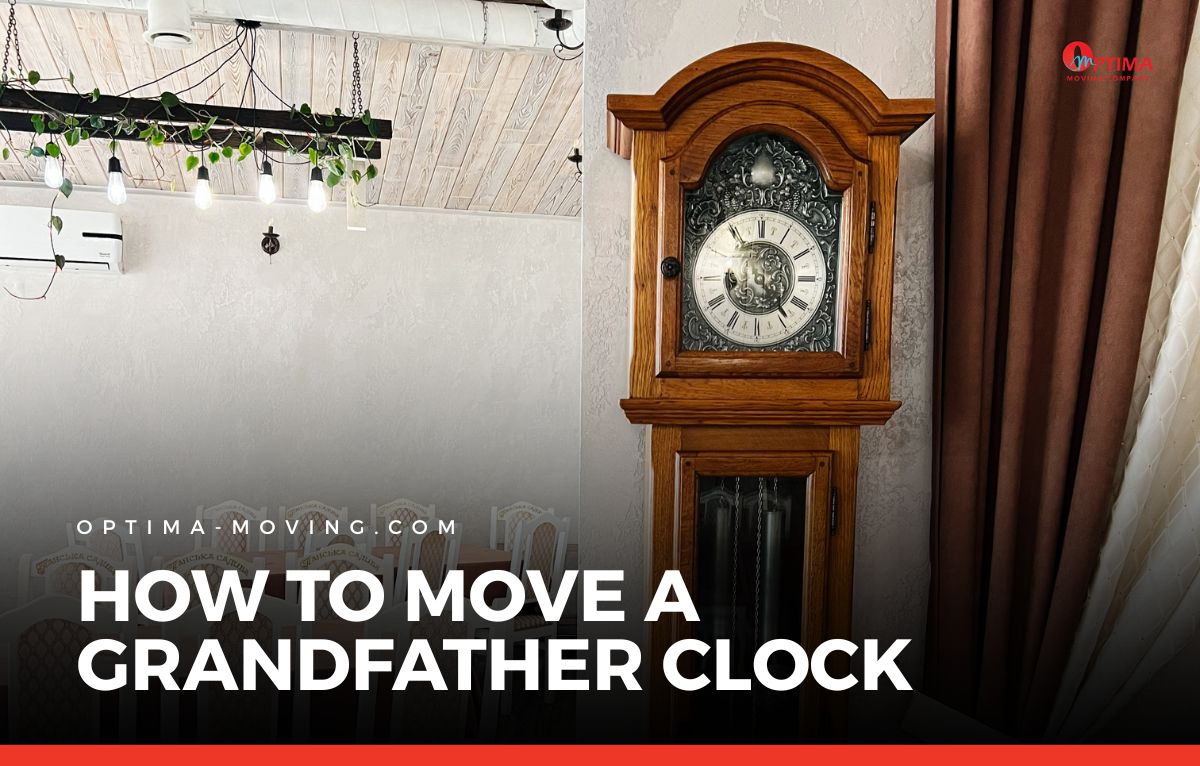A grandfather clock carries both weight and memory. Its tall, elegant case, pendulum, gears, and glass panels make it beautiful and vulnerable. Attempting how to move a grandfather clock without proper care can spell disaster for the mechanics or the case. Here, you’ll find a clear, grounded method to dismantle, transport, and reassemble your clock so it arrives intact and functions again.
Why a Grandfather Clock Demands More Than Muscle
Unlike a dresser or a table, a grandfather clock houses sensitive internal parts. There’s a swinging pendulum, hanging weights, and delicate gears inside the case, all of which can be damaged with a sudden shift. The clock’s height and depth make it a tipping hazard, and most cases also include glass panels or ornate woodwork that can crack under pressure. Rushing the process or treating it like ordinary furniture usually leads to broken components or cosmetic damage.
These clocks also carry value—sometimes monetary, often sentimental. Many are family heirlooms passed down for generations. Others were investments made years ago. Either way, they deserve care and attention when being moved.
Prepare the Clock and Your Path
Start with a full visual inspection. Check for loose panels, unlatched doors, or decorative pieces that can shift. Dust and clean around moving parts gently. Locate any paperwork or original manual if you still have it; it might help guide the reassembly later.
Gather materials before starting. You’ll need padding like blankets or foam, soft cloths to wrap individual pieces, basic tools like screwdrivers, and gloves to protect both the clock and your hands. Look around the home and plan the exit route. Check doorways, turns, steps, and hallways for tight corners or tripping hazards. If you notice a tight squeeze, measure both the space and the clock to confirm clearance. In some cases, removing doors temporarily can help create room to maneuver.
Internal Parts Must Come Out First
To avoid damage during transport, internal parts of the clock should always be removed. Begin by gently stopping the clock’s movement. Let the pendulum slow until it halts. Then open the clock’s door carefully. Using both hands, lift the pendulum straight up and out. Wrap it in a soft cloth and place it somewhere safe.
Next, remove the clock’s weights. These are typically heavy and hang from cables or chains. Each one must be taken out and labeled so it returns to the correct position later. Wrap each weight separately, keeping them cushioned and secure. Loose chains or cables should be tied or secured inside the clock so they don’t tangle or snap during transport.
If the clock has removable panels or glass, remove them carefully. If not, cover them with thick padding and use painter’s tape to secure protection in place. You should never apply tape directly onto finished wood.
Moving the Clock Body Without Damage
The body of the clock is still heavy and often awkward to hold. To move it safely, wrap it fully with blankets or padded cloths. Focus on protecting corners, legs, and decorative edges. Once wrapped, the clock should stay upright throughout the move. Avoid laying it on its side or back unless there is no other option and you’ve confirmed it’s safe for your specific model.
When lifting, always use at least two people. Keep a steady pace and use a dolly if the path is long. For staircases, slow coordination is key. One person should support from the top while another guides from the bottom. Each turn and threshold should be approached slowly to avoid bumping or dragging.
In the moving vehicle, position the clock close to a wall and secure it in place with straps. If the floor is uneven, add a layer of padding underneath to keep it stable. Avoid placing anything on top of the clock and don’t wedge it in too tightly among other items.
Reassembling at the Destination
Once at the new location, take your time unwrapping the clock. Let it rest upright for at least a couple of hours to adjust. Reattach any side panels or trim you removed earlier. Unwrap the pendulum and weights, and reinstall them using your earlier labels as guides. The pendulum should hang freely and move without obstruction. Weights must be installed in the correct position to ensure accurate timing.
Check the base to ensure the clock stands level. If not, adjust its feet or use shims to correct the tilt. Once everything is in place, start the pendulum and let the clock run. Monitor its operation for the next day or two. Small adjustments might be necessary to correct timing or chime issues.
When You Shouldn’t DIY
Some moves aren’t worth the risk. If your grandfather clock is particularly old, valuable, or fragile, or if your home has narrow stairs and tight corners, it may be safer to bring in professional movers. Experienced teams know how to handle antique furniture and large items. They come with proper gear, experience, and the ability to handle unexpected issues during the move.
Even if you’re confident in your lifting and planning, a grandfather clock is a delicate, high-risk item. One slip can ruin its appearance or damage the mechanism. If in doubt, call professionals to handle the process.
Wrap-Up: Time Deserves Respect
Understanding how to move a grandfather clock isn’t just about muscle; it’s about patience, preparation, and treating a delicate object with the respect it deserves. By removing internal parts, padding the body, planning your route, and handling reassembly slowly, you reduce the risk of damage. When a clock has value beyond money, it’s worth taking the time to move it properly.
For those who want to make sure everything arrives safely, Optima Moving offers careful, trained handling of grandfather clocks and other fragile items. We help protect what matters, every step of the way.




